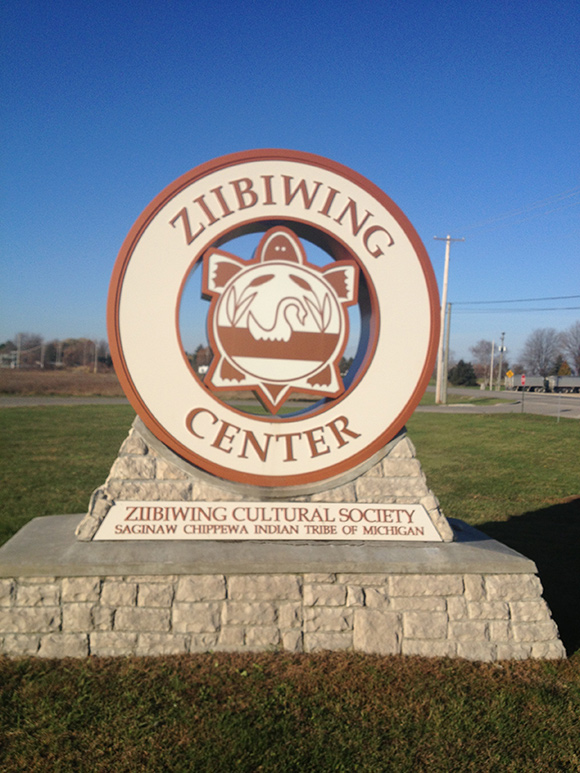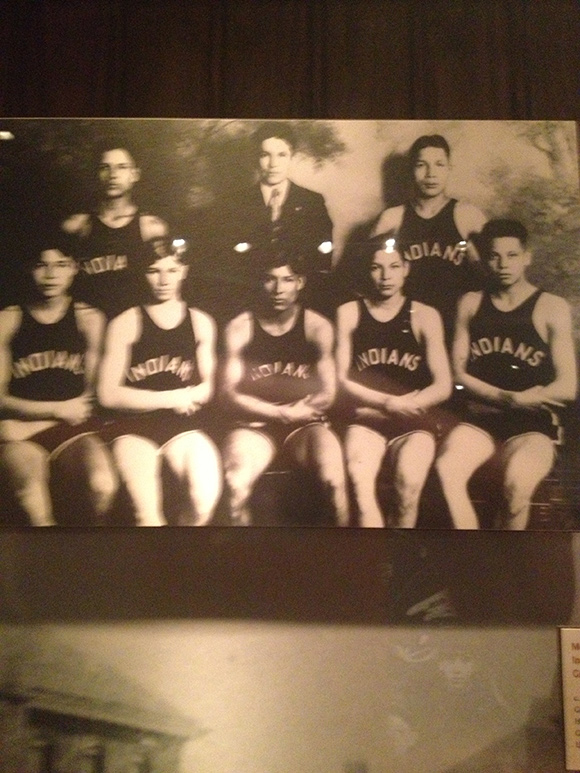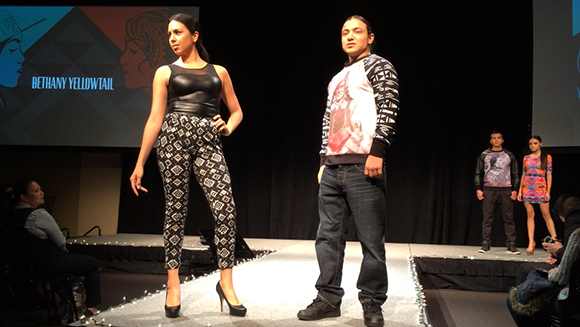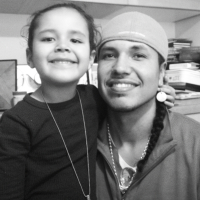Why I Am Thankful: Survival, Fashion, Language and Family

This is going to be a very short post. Why? Because I’m about to go eat some good food and watch some football. It is, after all, Thanksgiving season and I indulge. HEAVY. Let me explain why:
Extremely Quick Story: My grandpa was considered a spiritual leader within my community. Every single morning—rain, snow or shine—he’d get up before the sun rose and go up to one of our sacred spots and give a prayer of thanks. He’d give thanks for the sun that was about to rise, for having enough food, for being able to even say that prayer. He gave thanks for the next generations—us. It was a ritual of thanks.
During this part of the year, on social media, I see Natives who seem to be always angry about something. It seems like it’s kinda like their job to be angry and make memes and Facebook posts about how angry they are—angry about sports, angry about clothes, angry about mascots angry about…giving thanks. Of course, that’s certainly their right to be angry, and there are definitely things that I’d like to change and try to work on changing. I get that. But I contrast that anger with my grandpa’s attitude, and that of many other Native elders I grew up knowing: Theirs was one of thankfulness. Gratitude. They grew up in a different time when resources were more scarce and there was much more animosity between Native people and non-Natives. During those rough times, there was no guarantee that our small communities would have enough food, that they would be able to say those prayers, or indeed, whether or not the sun would rise for Native people again.
Native people were almost wiped out. But we weren’t—we survived. And for that, I am thankful.
When I hear about Natives angry about Thanksgiving, I chuckle. Thanksgiving is as inherent to Native hunter-gatherer life as breathing. Almost every single Native culture gave thanks for the bounty that they collected—whether it was corn or a hunt or berries. White folks/Europeans/colonialism did not create the emotion of “thanksgiving”—that’s giving them WAYYYYYYY too much power. Of course, we have an obligation to separate the mythology of Thanksgiving from the facts, but that’s simple—that’s just part of what we’re supposed to do. But giving thanks is inherently us; it’s Native people in a nutshell.
It’s what Native people did. Hopefully it’s still what Native people still do—give thanks.
Anyway, I haven’t written in a while—I’ve been on the road and I spilled water on my laptop awhile ago, so it’s been on borrowed time. It’s falling apart before my very eyes, like my basketball game. Yet, I’m still thankful for my poor little broken computer—it produced three books and a bunch of articles. I guess I could be angry, but I’d rather be thankful.
Recently, I’ve had the wonderful opportunity to visit with/speak to a bunch of you in recent weeks, and here’s a bit of a collage of some of the really cool stuff that I’ve seen. There is so much beauty and life and intelligence in Indian country, and I’m thankful for all of it. From the Saginaw Chippewa Tribe making their Creation stories compelling to a whole new generation of Nish children by using animation, to the Sovereign Native Youth Leadership Program in Nebraska, headed by Judi gaiashkibos and Scott Schafer, there is so much to be hopeful and thankful for. From all of the artistic/cinematic talent at the imagiNATIVE film festival (check out The Lesser Blessed and Maina if you get a chance -- I have no clue how those movies are being released, but they’re both powerful), you begin to realize that the way to counteract negative media images is not by simply boohooing and complaining, but by CREATING our own realistic images within the media. These are beautiful images for our kids to see.
Also, I’m thankful for the good folks at Nike N7—Grand Puba Sam McCracken, Sweetwater Sahme, Isabel Yasana—for giving back to the community by highlighting Native designers, models, singers and actors and actresses at their amazing “Bridging the Arts” event on Nike headquarters. Nike doesn’t have to give back—little Native kids are going buy Air Jordans whether or not Nike does ANYTHING for the Native community. But still, they give back. They highlighted everyone from the Baker Sisters and Roseanne Supernault to the incomparable 5-year-old singing phenom Devon Bluehorse—the kid is amazing. Nike put Native talent on display in all formats. Similar to the film festivals, you realize that the way to counteract misunderstandings about Native fashion is not simply by complaining and being angry about it, but by creating compelling and beautiful garments yourself, like those created by Bethany Yellowtail and Tierra Tapuro. Here is a video from Bethany’s collection:
And finally, check out this video by Thosh Collins for Rock Your Mocs Day. Rock Your Mocs is actually a pretty powerful reminder that our traditional items—in this case moccasins—have relevance (and can be pretty damn sporty) today. Nothing shows that fact better than Thosh’s short video which, along with Canadian dancer James Jones, melds aspects of modern and historical Native beauty and fitness. Enjoy.
We’ve got a lot that we have to change within Indian country. Definitely. But I see things that make me hopeful every single day and that makes me realize that we also have so much to be thankful for—Happy Thanksgiving, everyone.
(This post is dedicated to Darrell Robes Kipp, a warrior and language advocate, who took the time to move beyond complaining and instead created institutions to preserve Native languages. Rest in Peace uncle and may God comfort your family. I’m thankful for folks like Darrell—language warriors—and also thankful that we do still have our languages. Like Native people, our languages were almost wiped out—but they are still here, thanks to folks like Darrell. For that, and them, I am thankful).
Gyasi Ross
Blackfeet Nation Enrolled/Suquamish Nation Immersed
Activist/Attorney/Author
Pre-order new Book, "How to Say I Love You in Indian,"
coming December!
Twitter:
@BigIndianGyasi
www.cutbankcreekpress.com
Read more at http://indiancountrytodaymedianetwork.com/2013/11/26/why-i-am-thankful-survival-fashion-language-and-family-152449





